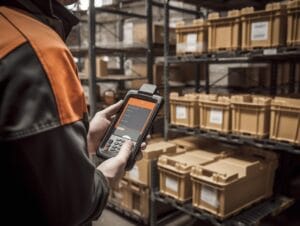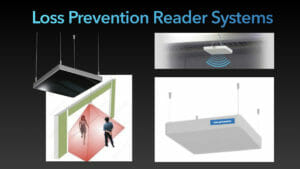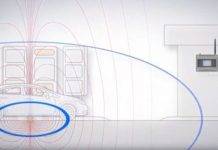RFID software is a specialized application that enables businesses to manage and utilize RFID (Radio Frequency Identification) technology effectively. It serves as the backbone of RFID systems, facilitating the collection, processing, and analysis of data transmitted by RFID tags and readers. RFID software allows for the configuration and management of RFID readers, customization of data capture settings, and integration with existing business applications. It enhances data accuracy, provides real-time tracking and monitoring capabilities, and supports advanced analytics and reporting, making it a crucial tool for optimizing various operational processes such as asset tracking, inventory management, access control, smart shelves, and loss prevention.
RFID Software Free Download: For Various Applications – Asset Tracking, Inventory Management, Access Control, Smart Shelves, Loss Prevention, and More
In today’s fast-paced business world, the ability to efficiently track and manage assets is crucial. RFID (Radio Frequency Identification) technology has emerged as a game-changer, offering real-time data collection and seamless tracking capabilities. Central to leveraging RFID technology is the RFID software that powers the entire system. This article delves into the realm of RFID software, focusing on free download options that cater to various applications such as asset tracking, inventory management, access control, smart shelves, and loss prevention.
Understanding RFID Software
What is RFID Software?
RFID software is a specialized application that enables businesses to manage and utilize RFID technology effectively. It serves as the backbone for RFID systems, facilitating data collection, processing, and analysis from RFID tags and readers.


Key Components of RFID Software
- RFID Tags: Small devices attached to items that contain unique identifiers.
- RFID Readers: Devices that read the information from RFID tags.
- Middleware: Software that connects the RFID readers to business applications.
- Backend Systems: Databases and servers where the data is stored and processed.
How RFID Software Works
When an RFID reader scans a tag, it sends the data to the RFID software. The software processes this data, which can then be integrated with existing systems to provide real-time information on the location, status, and movement of items.
Applications of RFID Software
Asset Tracking

Benefits
- Real-Time Location Tracking: Know exactly where your assets are at any given time.
- Improved Asset Utilization: Ensure assets are being used efficiently.
- Reduced Loss and Theft: Keep track of valuable assets to prevent loss.
Use Cases
- Healthcare: Tracking medical equipment and supplies.
- Construction: Monitoring tools and machinery.
- Manufacturing: Managing raw materials and finished goods.

Inventory Management
Benefits
- Accurate Stock Levels: Maintain up-to-date inventory counts.
- Faster Audits: Conduct inventory checks quickly and efficiently.
- Optimized Reordering: Ensure optimal stock levels to meet demand.
Use Cases
- Retail: Managing stock in stores and warehouses.
- Pharmaceuticals: Tracking medication and supplies.
- Food and Beverage: Monitoring perishable goods.

Access Control
Benefits
- Enhanced Security: Control who has access to specific areas.
- Automated Entry: Streamline access to buildings and restricted zones.
- Detailed Logs: Keep records of access events for security audits.
Use Cases
- Corporate Offices: Managing employee access.
- Educational Institutions: Securing campuses and facilities.
- Event Management: Controlling entry to events and VIP areas.

Smart Shelves
Benefits
- Automated Inventory Updates: Shelves update inventory counts in real-time.
- Improved Customer Experience: Ensure products are always in stock.
- Efficient Restocking: Alert staff when items need replenishment.
Use Cases
- Retail: Enhancing store operations and customer service.
- Libraries: Managing book inventories.
- Warehousing: Optimizing storage and retrieval processes.

Loss Prevention
Benefits
- Theft Deterrence: Track items and deter theft.
- Shrinkage Reduction: Minimize inventory shrinkage.
- Detailed Reporting: Generate reports on loss incidents.
Use Cases
- Retail: Reducing shoplifting and employee theft.
- Logistics: Ensuring the security of goods in transit.
- Museums: Protecting valuable exhibits.
Free RFID Software Options
Overview of Popular Free RFID Software
- Asset Tracking Software: Known for its powerful and versatile RFID solutions.
- Inventory Management RFID: Offers robust software compatible with a wide range of RFID hardware.
- Access Control Software: Provides reliable software for various RFID applications.
- Anti-Theft Software : Features advanced software with comprehensive functionality.
- Smart Shelf RFID: Delivers user-friendly software with strong support.
Comparison of Features
| Software | Key Features | Compatibility |
|---|---|---|
| Asset Tracking | Versatile, powerful, customizable | Various RFID hardware |
| Inventory Management | Robust, wide range, scalable | Various RFID hardware |
| Access Control | Reliable, efficient, user-friendly | Various RFID hardware |
| Anti-Theft | Advanced, comprehensive, secure | Various RFID hardware |
| Smart Shelf | User-friendly, strong support, flexible | Various RFID hardware |
How to Choose the Right Software for Your Needs
Consider the following factors when choosing RFID software:
- Compatibility: Ensure the software is compatible with your existing hardware.
- Features: Look for software that offers the features you need.
- Scalability: Choose software that can grow with your business.
- Support: Opt for software with good customer support and documentation.
How to Download and Install RFID Software
Step-by-Step Guide
- Visit the Official Website: Go to the website of the RFID software solutions provider.
- Download the Software: Locate the download link and click to download.
- Install the Software: Follow the installation instructions provided.
- Configure the Software: Set up the software according to your specific needs.
- Test the System: Ensure everything is working correctly before full deployment.
Common Installation Issues and Solutions
- Compatibility Problems: Ensure your hardware is compatible with the software.
- Installation Errors: Follow the installation guide carefully and check for missing steps.
- Configuration Issues: Refer to the software documentation for detailed setup instructions.
Optimizing RFID Software for Your Applications
Customization Tips
- Tailor Data Capture Settings: Adjust settings to capture the most relevant data.
- User Interface Customization: Personalize the interface to suit your workflow.
- Automate Reports: Set up automatic report generation for regular insights.
Integration with Existing Systems
- APIs and Middleware: Use APIs and middleware for seamless integration.
- Data Synchronization: Ensure data is synchronized across all systems.
- Training and Support: Provide training for staff to maximize the use of integrated systems.
Best Practices for Maximizing Efficiency
- Regular Updates: Keep your software up-to-date with the latest versions.
- Routine Maintenance: Perform regular system checks and maintenance.
- User Training: Ensure all users are adequately trained on the software.
Future Trends in RFID Software
Emerging Technologies
- IoT Integration: Combining RFID with IoT for enhanced data collection.
- AI and Machine Learning: Using AI to analyze RFID data and predict trends.
- Blockchain: Securing RFID data with blockchain technology.
Predicted Developments in RFID Software
- Increased Automation: More automated processes and decision-making.
- Enhanced Analytics: Advanced analytics tools for deeper insights.
- Improved User Interfaces: More user-friendly and intuitive interfaces.
How Businesses Can Stay Ahead
- Invest in Training: Keep staff up-to-date with the latest RFID technologies.
- Adopt New Technologies Early: Be an early adopter of emerging trends.
- Focus on Continuous Improvement: Regularly review and improve your RFID systems.
Conclusion
RFID software is a powerful tool that can significantly enhance various business operations, from asset tracking to loss prevention. Free RFID software options provide an accessible entry point for businesses looking to implement this technology. By understanding the benefits, applications, and best practices for using RFID software, businesses can optimize their operations and stay ahead in a competitive market.
FAQs
1. What is RFID software used for?
RFID software is used for managing and utilizing RFID technology to track and monitor assets, inventory, access control, smart shelves, and loss prevention.
2. Is there any free RFID software available?
Yes, several free RFID software options are available here: https://software.fresh222.com/
3. How can I integrate RFID software with my existing systems?
RFID software can be integrated with existing systems using APIs, middleware, and data synchronization tools. Ensure compatibility and provide proper training for seamless integration.
4. What are the benefits of using RFID software for inventory management?
RFID software for inventory management provides accurate stock levels, faster audits, optimized reordering, and improved supply chain visibility.
5. How do I troubleshoot common issues with RFID software?
Common issues can be troubleshooted by ensuring hardware compatibility, following installation guides carefully, referring to software documentation, and seeking customer support.






